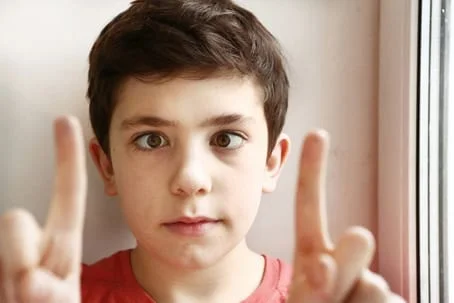Amblyopia, called a lazy eye, is a vision condition that usually appears during early childhood. While this condition is relatively common, it's possible to prevent ongoing vision issues with lazy eye treatment. Make an appointment with Eye Doctors of Arizona in Phoenix, AZ, if your child has symptoms of lazy eye.
What Is Lazy Eye?
Our optic nerves help our eyes communicate with our brain, allowing us to see clearly. However, sometimes, a child's nerve cells may not develop properly, leading to amblyopia. Typically, children with this condition have one strong eye and one weak eye, but in rare cases, it may impact both eyes.
Although amblyopia is the most common source of vision issues in children, it is not necessarily a problem with the eye. Instead, it's an issue with the connection between the eye and the brain. Lazy eye is highly treatable, and children showing symptoms of this condition should see an eye doctor as soon as possible.
What Are the Most Common Types of Amblyopia (Lazy Eye)?
- Strabismic: The most common form of lazy eye, this condition usually appears when a child has an eye crossed or misaligned. A child's brain may ignore signals from the misaligned eye, causing vision problems.
- Refractive: Children with this condition have a significant visual difference between one eye and another. Making it difficult for the brain to combine the signals it gets from both eyes, causing the brain to ignore the weaker eye entirely.
- Deprivation: This condition appears when an obstruction, such as a cataract, makes it difficult for light to enter the eye.
What Are the Symptoms of Amblyopia?
It's easy to miss the signs of amblyopia, which is why vision screenings for children are required. Symptoms of lazy eye include:
- • Issues with depth perception
- • Misaligned eyes
- • Frequent blinking or squinting
- • Problems with hand-eye coordination
- • Struggling to follow an option with the eyes alone
- • Frequently rubbing eyes
- I• ssues with reading speed or comprehension
Lazy eye treatment can be effective, especially if the condition is diagnosed early on. In addition, treatments can correct the issue, including patching, glasses or contact lenses, and vision therapy. It's also possible to prevent any vision loss from amblyopia by scheduling regular eye exams for your child.
Make an Appointment With an Eye Doctor Today!
A child may experience permanent vision loss if a lazy eye is not treated. Regular eye exams allow you to trust your child to receive immediate treatment. Make an appointment at Eye Doctors of Arizona in Phoenix, AZ, if you're concerned your child may have a lazy eye.

